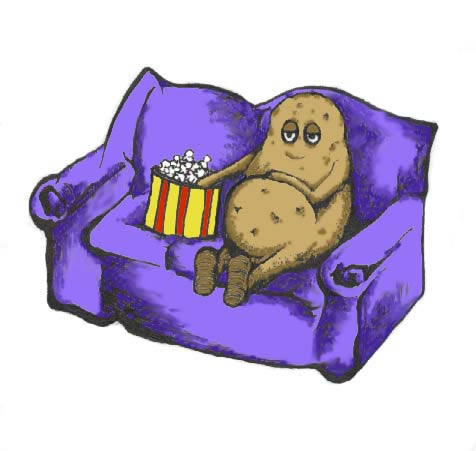What’s missing in my diet?
Written on January 23, 2013 at 10:07 pm, by Dr. Cokeley
I ask patients on a daily basis what vitamins they are taking if any and what their diet consists of. Most of them are wondering how this has anything to do with Chiropractic. My response, it has everything to do with Chiropractic. A patient’s vitamin intake and diet can determine how effective Chiropractic treatment will be and how quickly they will get better. Here are some key vitamins to make sure you are getting in your diet or through supplements and what they do for you.
- Vitamin A
Vitamin A plays an important role in bone growth, vision and cell division. The form that is beneficial for eye health is called retinol and is found in foods such as eggs, milk and liver. The other form of vitamin A is called a carotenoid (Ex: beta-carotene) which is found in plant based foods and orange or yellow foods. Carote
noids are considered powerful antioxidants and promote the growth of healthy cells and fight against the growth of unhealthy cells. They can also help protect against cardiovascular problems and other health conditions associated with oxidative damage. Daily supplemental recommended doses should  range from 2,500-7,500 IU’s per day and should not exceed those numbers for an extended period of time as it could be toxic.
range from 2,500-7,500 IU’s per day and should not exceed those numbers for an extended period of time as it could be toxic.
Sources of Vitamin A:
Retinol – eggs, milk and liver
Carotenoids – carrots, sweet potatoes, pumpkins, spinach and broccoli
- Vitamin B6
Vitamin B6 (pyridoxine) plays a key role in coenzyme activities and helps protect against conditions such as multiple sclerosis, anemia, heart disease and arthritis. This essential nutrient also plays a role in protecting the nervous system, restoring the immune system, protecting against infection and is well known for its ability to promote healthy skin. Vitamin B6 protects against the development of dandruff, acne, hair loss, dry skin, eczema and helps with treatment of skin conditions such as melanoma and psoriasis.
Sources of Vitamin B6: Brown rice, salmon, cod, chili powder, garlic, pistachios and liver. Cialis consegna immediata consegna immediata
- Vitamin B12
Vitamin B12 helps the body maintain a healthy immune system, make healthy blood cells, maintain a healthy nervous system, DNA and improve brain funct ion. Most people have a healthy store of vitamin B12 but the elderly and strict vegetarians who’s diets are lacking animal products are at a higher risk for developing a deficiency.
ion. Most people have a healthy store of vitamin B12 but the elderly and strict vegetarians who’s diets are lacking animal products are at a higher risk for developing a deficiency.
Sources of Vitamin B12:
Fish, meat, poultry, eggs and milk products
- Vitamin C
Vitamin C is well known for its antioxidant properties and for being a weapon against illness. It is also needed so the body can make blood vessels, cartilage and ATP production. ATP is the main energy source for your bodies tissues.
Sources of Vitamin C:
Broccoli, kale, spinach, bell peppers, strawberries, oranges and tomatoes
- Vitamin D
Vitamin D might be the most important vitamin on this list because it is so important for your bodies growth and development. There are two types of vitamin D, one you get from your diet and one from sunlight. D2 (ergocalciferol) is available from food intake and D3 (cholecalciferol) is made from exposure to sunlight. Vitamin D is important in maintaining a strong immune system, helping with calcium absorption and regulating inflammation.
Sources of Vitamin D:
Cod liver oil, fatty fish, egg yolk, cheese, salami, ham, sausage and SUNLIGHT!
Yours In Health!
Tyler Emmert
I Can’t Move my Neck!
Written on October 10, 2012 at 10:06 pm, by Dr. Cokeley
“When I woke up this morning, I couldn’t move my neck! Every time I try to move it, I feel sharp pain on the left side of the neck shooting down into the shoulder blade. It just came out of nowhere!”

Chances are, you are suffering from a common condition called torticollis, which literally means, “twisted neck” after the Latin terms of “torti” (twisted) and “collis” (neck). The common name for this is “wry neck,” and it’s basically a painful muscle spasm, like a “Charlie-horse” but located in the neck muscles. Usually, a person wakes up in the morning with this and the cause is often related to sleeping with the window being open or a fan or air conditioner blowing on you. It can also relate to a “cold settling in the muscle” after a cold or flu virus. Trauma such as falling or a car accident can also cause torticollis. However, most of the time, patients with torticollis are not sure what caused the abrupt onset of symptoms.
Usually, torticollis will gradually improve over a 2 week time frame. However, it only takes a few days to a week (at the most) if you receive chiropractic adjustments. Most importantly, without treatments, the sharp pain can last a week and can severely limit your activity, often prohibiting work as well as your desired “fun” activities. Hence, most people prefer having this treated as opposed to “waiting it out.” In some cases, it can last longer than a month and in rare cases even longer, so getting this treated is highly recommended. Also, try to get in for a treatment immediately before the muscle spasm really sets up. We find this to be the most effective approach. Here are a list of symptoms and treatment suggestions for torticollis:
Acute Torticollis Symptoms
- Muscle spasms
- Neck and shoulder pain
- Neck and spine contortion (neck twisted to right or left side of body)
Pain Relief Treatments for Acute Torticollis
- Chiropractic neck and spinal adjustment
- Analgesics
- Heat packs
- Muscle relaxants
- Rubs and ointments (Icy Hot, BioFreeze)
- Massage with essential oils
- Sleep / Relax
- Supportive cervical collar
Yours In Health!
Nathan Cokeley D.C.
Low Back Pain: Why Is It So Common?
Written on March 29, 2012 at 1:49 pm, by Dr. Cokeley
This question has plagued all of us, including researchers for a long time! Could it be because we’re all inherently lazy and don’t exercise enough? Or maybe it’s because we have a job that’s too demanding on our back? To properly address this question, here are some interesting facts:
- The prevalence of low back pain (LBP) is common, as 70-85% of ALL PEOPLE have back pain that requires treatment of some sort at some time in life.
- On a yearly basis, the annual prevalence of back pain averages 30% and once you have back pain, the likelihood of recurrence is high.
- Back pain is the most common cause of activity limitation in people less than 45 years of age.
- Back pain is the 2nd most frequent reason for physician visits, the 5th ranking reason for hospital admissions, and is the 3rd most common cause for surgical procedures.
- About 2% of the US workforce receives compensation for back injuries annually.
- Similar statistics exist for other countries, including the UK and Sweden.

So, what are the common links as to why back pain is so common? One reason has to do with the biomechanics of the biped – that is, the two legged animal. When compared to the 4-legged species, the vertically loaded spine carries more weight in the low back, shows disk and joint deterioration and/or arthritis much sooner, and we overload the back more frequently because, well, we can! We have 2 free arms to lift and carry items that often weigh way too much for our back to be able to safely handle. We also lift and carry using poor technique. Another reason is anatomical as the blood supply to our disks is poor at best. That makes healing of disk tears or cracks very difficult. Risk factors for increased back injury include heavy manual lifting requirements, poor or low control of the work environment, and prior incidence of low back pain.
Other risk factors include psychosocial issues such as fear of injury, beliefs that pain means one should not work, beliefs that treatment or time will not help resolve a back episode, the inability to control the condition, high anxiety and/or depression levels, and more. Because there are so many reasons back problems exist, since the early 1990’s, it has been strongly encouraged that we as health care providers utilize a “biopsychosocial model” of managing those suffering with low back pain, which requires not only treatment but proper patient education putting to rest unnecessary fears about back pain.
Yours In Health!
Nathan Cokeley
Chiropractic Care for Chronic Pain and Headaches
Written on November 10, 2011 at 1:17 pm, by Dr. Cokeley

I practice pain management on a daily basis. Most people see a chiropractor because they’re in pain. My patients consult me because they have a grabbing painful back that is keeping them up at night or neck and arm pain that won’t go away and is taking over their life. I might see a young woman with debilitating migraines; an athlete suffering from an injured shoulder; or a painter whose livelihood is threatened by the pain of a repetitive stress injury.
Like my medical colleagues, when I have a patient in pain, I try my best to alleviate it as quickly as possible, but there are differences.
As a conservative practitioner who does n ot treat organic disease, I appreciate the patient who has already been to medical specialists who have ruled out an organic cause-such as cancer or infection — for the patient’s pain. Rather, the pain disorder has been considered “functional”, a disturbance of function rather than disease. Most of my chiropractic practice is in what can be called “functional medicine”.
ot treat organic disease, I appreciate the patient who has already been to medical specialists who have ruled out an organic cause-such as cancer or infection — for the patient’s pain. Rather, the pain disorder has been considered “functional”, a disturbance of function rather than disease. Most of my chiropractic practice is in what can be called “functional medicine”.
A spinal adjustment is one form of therapy used to treat restricted spinal mobility and function. The goal is to restore spinal movement and, as a result, improve function and decrease pain. Additional treatments as well, such as ultrasound, electrical muscle stimulation and exercises may be beneficial towards the overall treatment goal.
Yours In Health!
Nathan Cokeley
Get Up and Get Moving or Death by Couch
Written on October 27, 2011 at 12:51 pm, by Dr. Cokeley

When it comes to movement, ANY type of movement can be beneficial and is definitely better than not moving at all ( ie. the couch).
Yes, simple movement and staying active can help prevent disease. Making small changes to your lifestyle can have an enormous impact when it comes to your health. Does it have to involve an intense grueling one-hour treadmill nightmare? Nope. Recommendations to establish some form of motion and activity are 30 minutes of moderate cardio per day and 8-10 strength training exercises with 10-15 repetitions of each exercise 2-3 times per week. This can be done all at once or broken up into different times throughout the day.
If your at home most the time, walk while your on the phone, squats while doing laundry, there is literally hundreds of ways to move throughout the day. It’s about prioritizing active movement in an increasingly sedentary world. One study showed positive effects on your health with as little as 7 minutes of exercise a week!! Another study showed that 4 minutes of high intensity exercise at one time can increase cardiovascular fitness. The point is that when it comes to movement, a little can go a long way to get you back on track. Any movement at all is better than none, especially over time.
The goal is not to run a marathon or lift an exorbitant amount of weights (unless that is your goal, then by all means go for it!), but rather to introduce new ways to get you up and moving every day. The health benefits are too great to overlook the power of movement. If you “get up and move” regularly, great! Keep up the good work! It’s doing you and your body a world of good. If you need to move more, start today! Take the first steps toward better health and feeling better overall today! You will not regret it.
Yours in Health!
Nathan Cokeley

Key Thought: Moderation!
Written on October 13, 2011 at 6:30 pm, by Dr. Cokeley
Food is something I love. We all need food, and it’s a good thing to hunger, thirst, and then be satisfied. These are great things, but it can go bad and then get even worse. With the rise of obesity food has been one area where we have been caught up in.
Food can be our escape:
1. Stress eating – we feel uncomfortable and we turn to food.
2. Pleasure seeking – we plan everything around food and get great pleasure out of the next “event” that may have our favorite item.
3. Gluttony – Pushing ourselves to the max, to see how much we can ingest in one sitting, only to feel uncomfortable and then the cycle restarts.
Eating for nutrition and community instead of an escape:
1. Be grateful for your food and give thanks.
2. Slow down – enjoy your food with your family and friends. Slowing down helps you digest better and feel fuller faster.
3. Quality not quantity – We all have heard “choose local”. Practice it. Just because we can get a bucket of who knows for $5 compared to a bundle of veggies doesn’t make it a wise choice.
4. Eat out as a treat, not the norm – eating out is expensive, lazy, usually very high calorie and high salt. Invite friends over and prepare a meal together.
5. Avoid fake food – If it is synthetically man-made its probably best to avoid it. Also sugary soda’s and snacks don’t provide any real nutrients that our bodies need to thrive.
6. Pass on the seconds – That second trip to the food trough is best to avoid, rather enjoy spending time in good conversations with family and friends.
You will find if you eat less and exercise more, your weight will not be as troublesome and you will feel better too.
Yours In Health!
Nathan Cokeley
Welcome to our blog!
Written on October 5, 2011 at 1:01 pm, by Dr. Cokeley
Welcome! We are going to regularly post topics on healthy lifestyles, exercise, nutritional information, and the leading topics within healthcare. So please check back soon!